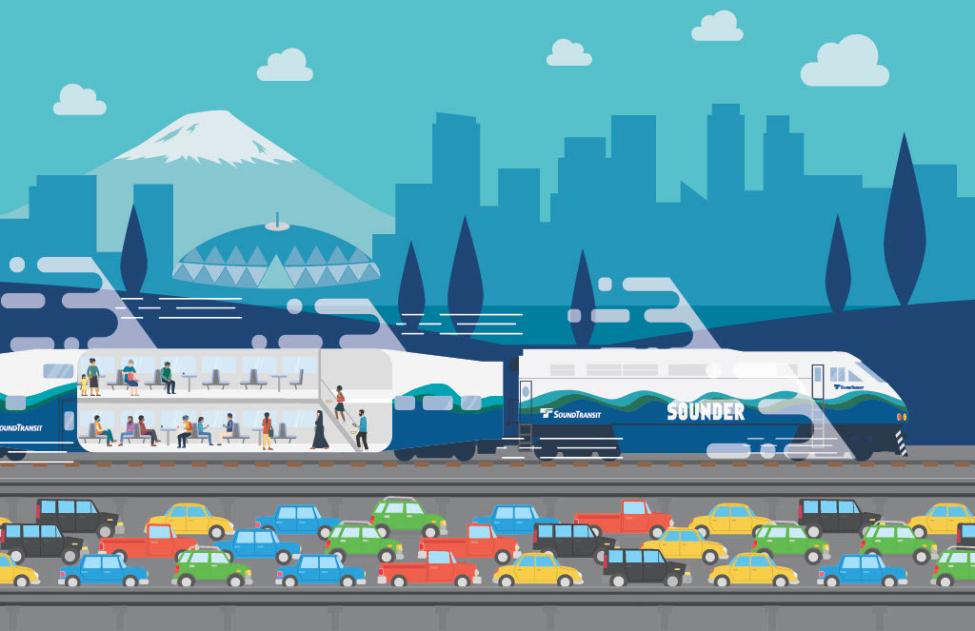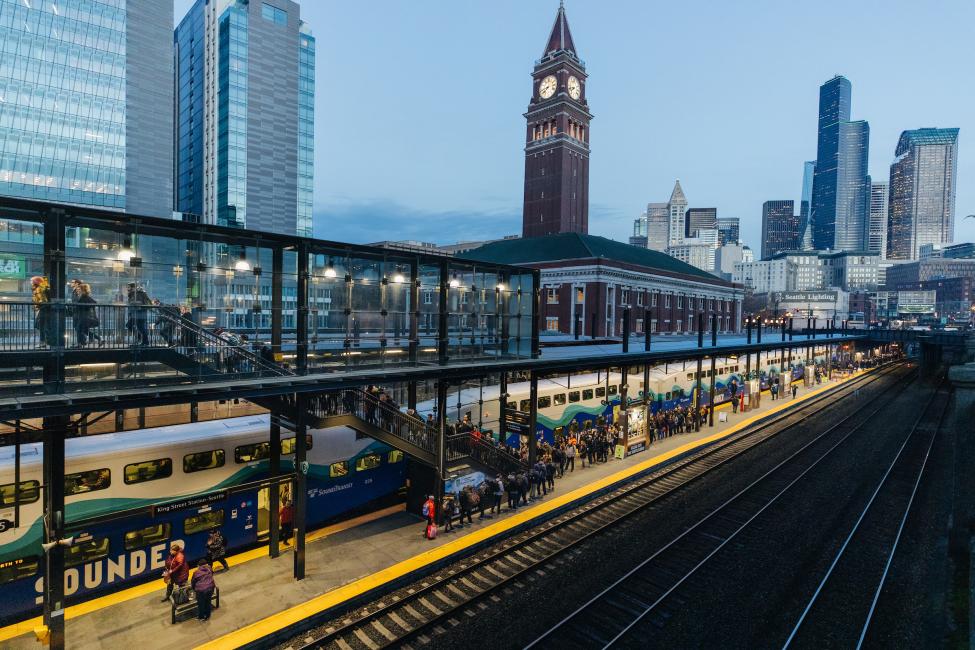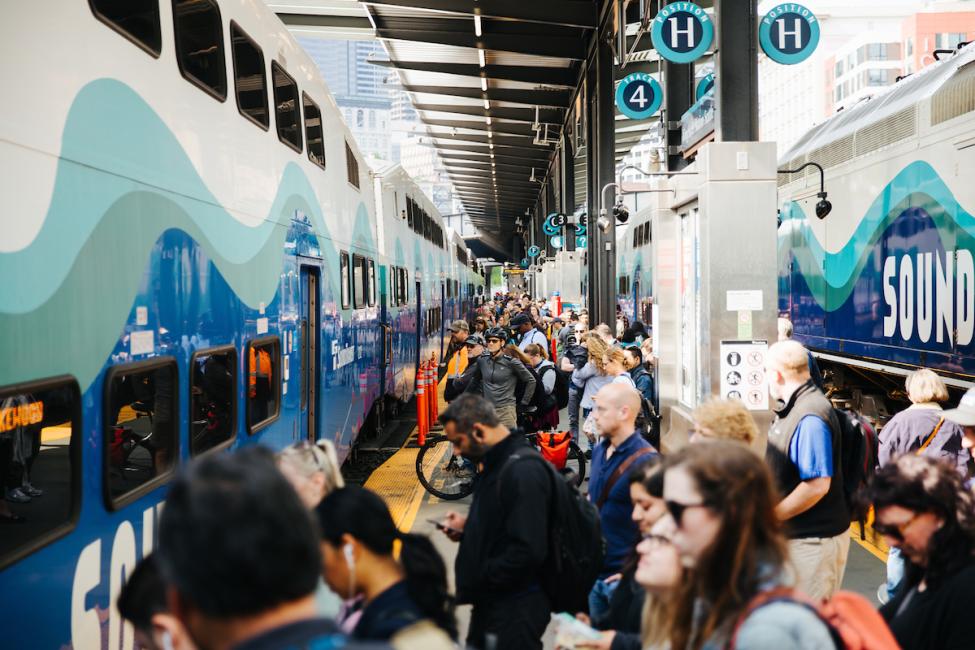Last year we shared about our plans to potentially re-envision the future for the S Line, Sound Transit’s popular train service that provides dependable, congestion-free weekday travel, plus occasional weekend special event service, between communities from Lakewood to Seattle.
In the pre-COVID era, S Line ridership was high—and often crowded—during peak commuting hours on weekday mornings and afternoons. That’s why the strategic plan we drafted in 2019 to help guide growth prioritized longer trains over potential new trips, to ensure we’d have enough capacity to carry rush-hour riders.
But as the region has recovered from the pandemic, travel priorities are changing for many of us. Hybrid work and more flexible schedules mean commuters aren’t always traveling every day, or at rush hours.
Instead, people want to take advantage of transit throughout the day for school, social activities, appointments, and errands.
How do we know? You told us!
This past fall, we asked for community input that will help inform the next iteration of Sounder South’s strategic plan. We talked with current Sounder riders and non-riders alike, with information provided in nine languages (English, Spanish, Vietnamese, Korean, Tagalog, Simplified Chinese, Somali, Ukrainian, and Russian).
Through a detailed online survey and conversations with focus groups, we asked whether we should consider adding new midday, evening, or weekend trips on the S Line (contingent on BNSF Railway approval) or continue the current plan for longer trains during peak times (which would allow us to carry more people).
Key takeaways
In the end, we received more than 5,600 survey responses, and we talked with thousands more people at public events and at meetings and focus groups with historically underserved communities.
The survey results showed the preference for more trips over longer trains was shared across all demographic groups — including people of all incomes, races, and geographic areas.
90% of survey respondents prefer more trips over longer trains.
81% favored introducing regular weekend service
57% supported adding more weekday service
75.3% would support reducing frequency during peak periods in order to add trips at other times of day or week*.
*contingent on BNSF Railway approval
Survey respondents and focus group participants expressed strong interest in additional weekday services at a variety of times, including early morning, late morning, midday, and evenings in both directions to better support swing and graveyard shifts.
Many focus group participants also noted they would use Sounder at least once a month for recreation, sightseeing, and shopping.
The last morning train departure time from Tacoma was always very challenging as a one-car household with a child who needed to be dropped off at daycare. Later time options would make it much easier. –Survey respondent
On the flip side, about 10% of survey respondents said they’d prefer we prioritize 10-car trains over adding new trips.
We received 80 comments regarding the amount of space on Sounder today (typically five-car trains). Of those comments, 17 cited the need to return to our pre-pandemic seven-car trains due to crowding. We also heard that bikes and scooters contribute to capacity issues.
Want to dive deeper? Read the full Sounder South Strategic Plan engagement summary here.
What comes next?
This impressive volume of community feedback is incredibly valuable for Sound Transit’s staff and Board of Directors.
Later this spring, we’ll present the Board with a thorough analysis of public engagement, along with research on travel patterns, peer agency research, and future ridership estimates. In addition, any new Sounder trips would require approval from BNSF, which owns most of the tracks Sounder runs on.
All these considerations will inform the Board’s discussions and potential future action around Sounder South’s future strategy.
In the meantime, sign up for Sounder project alerts to stay informed!


